by Justin Mckibben | Sep 6, 2017 | Alcohol, Binge Drinking, Celebrity, Drug Abuse, Fitness, Neen Williams, Recovery, Sober Fun
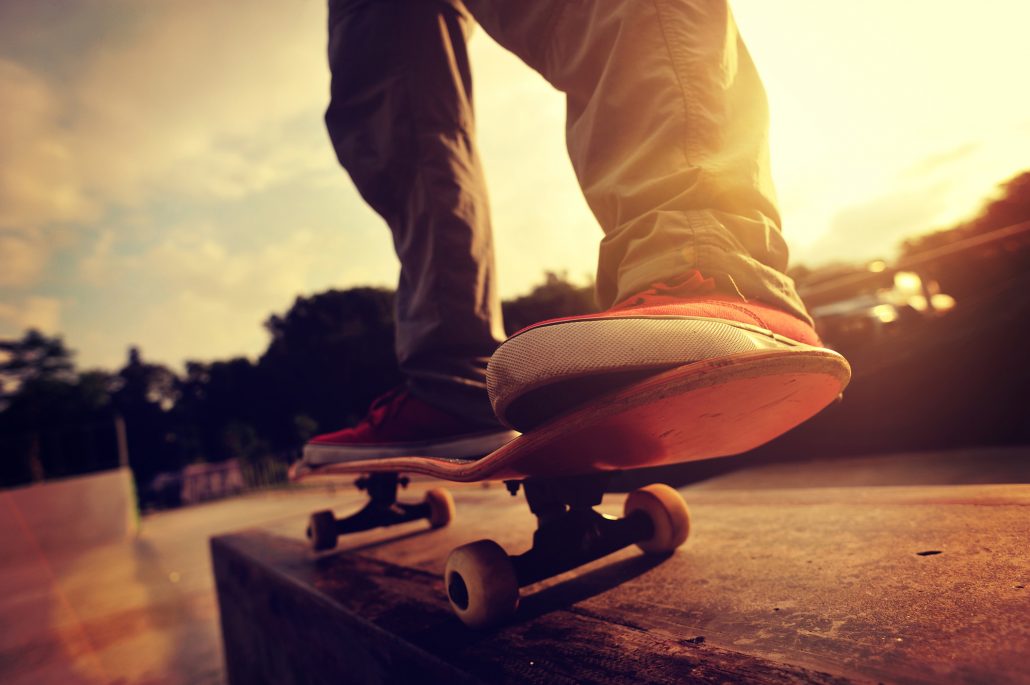
For many years Professional skateboarder Neen Williams lived a life of sleepless nights partying while creating a name for himself in the skater world. Born in Chicago, Illinois and currently shredding street tricks in his hometown of Los Angeles, California Williams has managed to attract sponsorship from several brands including:
- Deathwish
- Circa Footwear
- Thunder Trucks
He also has a line of board designs that are all pretty slick. Neen Williams says he’s been skateboarding since he was about 13 years old, and with the territory he found himself smoking and drinking alcohol on a regular basis. Now, at age 31 he has turned his passion into his point of reference for a more sober approach to life.
Sobriety and Skating
Williams admits that he used to have a very different perspective of the life of a skateboarder himself. In a recent video with VICE he states,
“Skateboarding forever was like ‘drink boozes, smoke, we don’t stretch we don’t work out,’ and later in the interview he explains, “Back in the day I used to wake up late, eat like a burrito and slam a beer; go out and skate, manage to get a trick, and it would just be party time again.”
“It would never stop. It was just like a vicious cycle. There were a couple nights I would wake up at 6 or 7 (PM) and it would be dark outside.”
In that vicious cycle, Williams talks about needing days at a time to recover from drinking and partying, and on the last day when he finally felt good enough to get back to skating he would immediately go back to the partying as well.
He goes on to say that he wishes he had known all of this when he was a teenager, but even at 31 years old he is still learning so much. During part of the video interview Neen Williams says that he knows if you take care of yourself, you can skate forever. That, he says, is why he now makes the effort to eat so well and train his body,
“This is why I do all this healthy stuff for myself… because that is what I want, is to skate forever.”
That seems like a really legit reason to take care of yourself; to do what you love forever!
Originally Williams said he decided not to drink for the 6 to 8 month healing period he was told he would need for a torn ACL. Since then, it appears his lifestyle has changed dramatically to make his dream work.
Health Food and Fitness
Even though some may not immediately associate a balanced and healthy diet, along with regular exercise, it appears to have become a crucial element to Williams’ evolution as a skater.
On VICE Williams prepares a breakfast of acai bowls that honestly look stacked with natural goodness. Williams tops off one of the meals he makes- serious serving of what looks like well-blended fruits and vegetables- with diced pineapples and what I would guess to be barriers, almond butter, and granola, it looks like heaven.
You also get to see Williams break out a yoga mat and start stretching himself out. From there he said since Saturday isn’t a week day, he warms up with a quick 200 in to start the day.
When talking about his workout, he compares it to any other athlete. He says football players train to do what they do and they are covered in pads and protective gear. While he admits football players have 300lbs of muscle falling on them, he says the pro skater is usually out in the bare minimum, if anything, fighting sometimes face-first with concrete.
The Deathwish Team Manager, Jay Thorpe, makes a cameo during a street-side video shoot and says it is “really rad to see” when talking about Williams cleaning up his act and committing to the thing he wants to do for the rest of his life.
Williams says that while he doesn’t judge anyone, and doesn’t regret his party days, he has seen a lot of people fall because of it and he likes what he’s doing now. Probably a big inspiring part of Williams’ story is that he says he is glad he went through it and worked his way out of it to be the person he wants to be.
Athletes are put under a lot of pressure to succeed, even professional skateboarders and other extreme sports athletes. Sometimes the lifestyle of pro-sports stars can influence issues with substance use or addiction. Too many talented individuals are held back by these obstacles, but it never too late to get a fresh start toward a better, healthier expression of yourself. If you or someone you love is struggling with substance abuse or addiction, please call toll-free now.
CALL NOW 1-888-922-5398
by Justin Mckibben | Aug 29, 2017 | Addiction, Alcohol Addiction, Drug Abuse, Drug Policy, Inpatient Treatment, Outpatient Treatment, Professionals
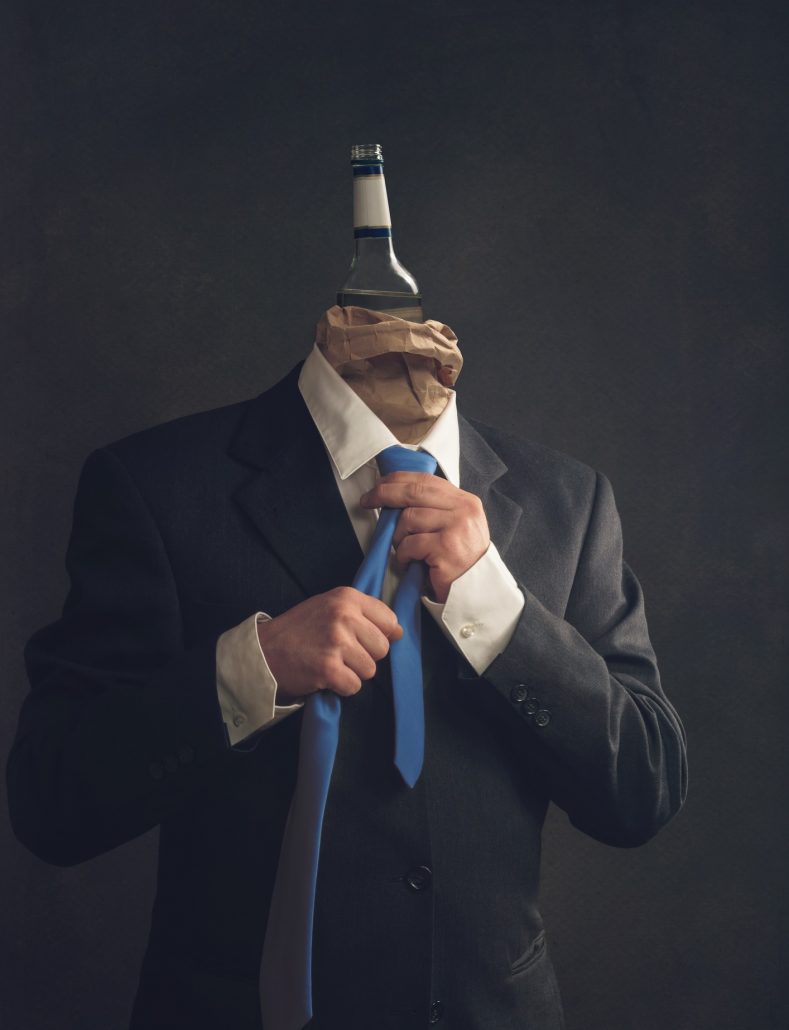
With substance use disorder and addiction being such a prevalent problem in America, we think it is crucial for people to understand substance use and addiction as best as they possibly can. Part of looking at which professions have the highest rate of substance use disorder is not just about making people aware of how common it is in the workplace, but also to break the stigma of substance use disorder and show that drugs and alcohol impact people in every workplace, from entry level to executives.
Resources of Substance Use Rates
In April of 2015 the Substance Abuse and Mental Health Services Administration (SAMHSA) released a survey that combined data collected by the National Survey on Drug Use and Health (NSDUH) from every year between 2008 and 2012 to find out which professions held the highest rates of:
The NSDUH assess symptoms of dependence or abuse of alcohol or drugs through a series of questions included in their survey. The questions are based on the criteria described by the fourth edition of the Diagnostic and Statistical Manual of Mental Disorders (DSM-IV). It defines illicit drugs as:
The NSDUH uses the definition of heavy alcohol use of:
- 5 or more drinks on the same occasion
- 5 or more days in the past 30 days
The rating system includes full-time workers from age 18 up to age 64.
Which Jobs Have the Highest Rates of Substance Use Disorder?
In the following categories, number represents the percentage of works out of all those surveyed between 2008 and 2012.
Heavy Alcohol Use
- Mining workers- 5%
- Construction- 5%
- Accommodations/Food Services- 8%
- Arts/Entertainment/Recreation- 5%
- Utilities- 3%
- Wholesale trade- 2%
- Management/Administrative support/waste management- 9%
- Manufacturing- 7%
- Agriculture/forestry/fishing/hunting- 4%
- Retail trade- 0%
- Transportation and warehousing- 8%
- Other services (except public administration)- 5%
- Real estate/rental/leasing- 5%
- Information- 1%
- Professional/scientific/technical services- 7%
- Finance and insurance- 4%
- Public administration- 6%
- Educational services- 7%
- Health care and social assistance- 4%
Illicit Drug Use
The overall rate of illicit substance use among full-time workers, between the age of 18 to 64 years old, who admitted to having used within a month of taking the survey was 8.6% of workers. That may not seem like a lot, but when you consider that is a percentage of ALL professions it is actually a lot bigger than you think.
- Accommodations and food services- 1%
- Arts/Entertainment/Recreation- 7%
- Management/Administrative support/waste management- 1%
- Information- 7%
- Construction- 6%
- Other services (except public administration)- 2%
- Real estate/Rental/Leasing- 9%
- Retail trade- 3%
- Professional, scientific and technical services- 0%
- Wholesale trade- 8%
- Manufacturing- 4%
- Finance and insurance- 5%
- Utilities- 1%
- Transportation and warehousing- 9%
- Agriculture/Forestry/Fishing/Hunting- 7%
- Health care and social assistance- 5%
- Mining- 0%
- Educational services- 8%
- Public administration- 3%
Substance Use Disorder
When it comes to substance use disorder the data is collected for full-time workers from age 18 to 64 that fit the criteria for substance use disorder within a year of taking the survey. The rates of substance use disorder in different professions include:
- Accommodations and food services- 9%
- Construction- 3%
- Arts/Entertainment/Recreation- 9%
- Mining workers- 8%
- Utilities- 5%
- Management/Administrative support/waste management- 4%
- Retail trade-5%
- Agriculture/Forestry/Fishing/Hunting- 5%
- Wholesale trade- 4%
- Other services (except public administration)- 1%
- Real estate/Rental/Leasing- 0%
- Information- 8%
- Finance and insurance- 4%
- Manufacturing- 3%
- Transportation and warehousing- 1%
- Professional, scientific and technical services- 8%
- Public administration- 2%
- Health care and social assistance- 7%
- Educational services- 5%
Different Job Substance Use Trends
When looking at these rankings we can see a few professions that are consistently represented in the top five of all three categories.
NOTE: Remember the top ranks are not based on the overall number of users, but on the percentage of the total industry.
#1 in Heavy Alcohol Use– Mining Workers
121,000 mining workers that were surveyed contributed to the top ranking percent in an industry for heavy alcohol use. This number may seem small compared to the high numbers of heavy alcohol use in other professions. But think of it like this- If there are:
- 100,000 nurses and 70 of them drink heavily
- 100 miners and 70 of them drink heavily
Which would you think it a bigger issue?
#1 in Illicit Drug Use– Accommodations and food services
Accommodations and food services came in as the top rated profession for illicit drug use. According to the numbers of all those in this industry measured, approximately 1,169,000 were recorded for illicit drug use within a month of the survey.
This statistic does not change when accounting for gender or age differences. What this suggests is there may be something unique about this industry and how people end up using drugs more often working in accommodations and food services more than anywhere else.
#1 in Substance Use Disorder- Accommodations and food services
In terms of substance use disorder the accommodations and food services industry again come in at the top of the list. This time, the numbers of those surveyed shows that approximately 1,038,000 people in this profession actually fit the criteria from the DSM-IV for substance use disorder.
But unlike with illicit drug use, this rating did not stay the same when adjusting for age or gender differences. So what does that mean?
It means the higher rates of substance use disorder in the accommodation and food industry depends on the demographics employed in that industry. For example, if you look at age:
- 18-25 years old this industry is number 2
- 26-34 years old its number 1
- 35-49 years old this industry is number 3
- 50-64 years old its only number 11
So What Jobs are the Worst for Substance Use Disorder?
The big thing here is we must acknowledge that there are variables like age and gender that actually will make a big difference as to which jobs are ‘worse for substance use disorder’, while also recognizing the issue of substance use and addiction is not one size fits all. It is a different story for every individual. There is a formula that takes environment into account, but that formula is not the same for everyone.
A young woman working in the accommodations and food services industry might have a harder time staying off drugs than she might as a school teacher… or maybe not. Young men working in social assistance might find it a lot easier to stay off of drugs than one working in construction. It isn’t a guarantee, but it is a trend we can note.
So, does your job put you in an industry with higher rates of drinking, drug use or addiction? Are you more likely to have co-workers or employees that struggle with substance use than in another position?
With data like this we have to ask- does the job make an impact?
When we consider how central our jobs are to our everyday lives, we should take into account what kind of workplace we put ourselves in and what we have to offer. It is the same thing for those of use trying to work toward recovery. Substance use disorder recovery can be a lot of work, but it is definitely worth the livelihood you stand to gain from it. If you or someone you love is struggling with substance abuse or addiction, please call toll-free now.
CALL NOW 1-888-922-5398
by staff | Jul 31, 2017 | Alcoholics Anonymous, Drug Abuse, Fitness, Recovery, Sober Fun, Sports
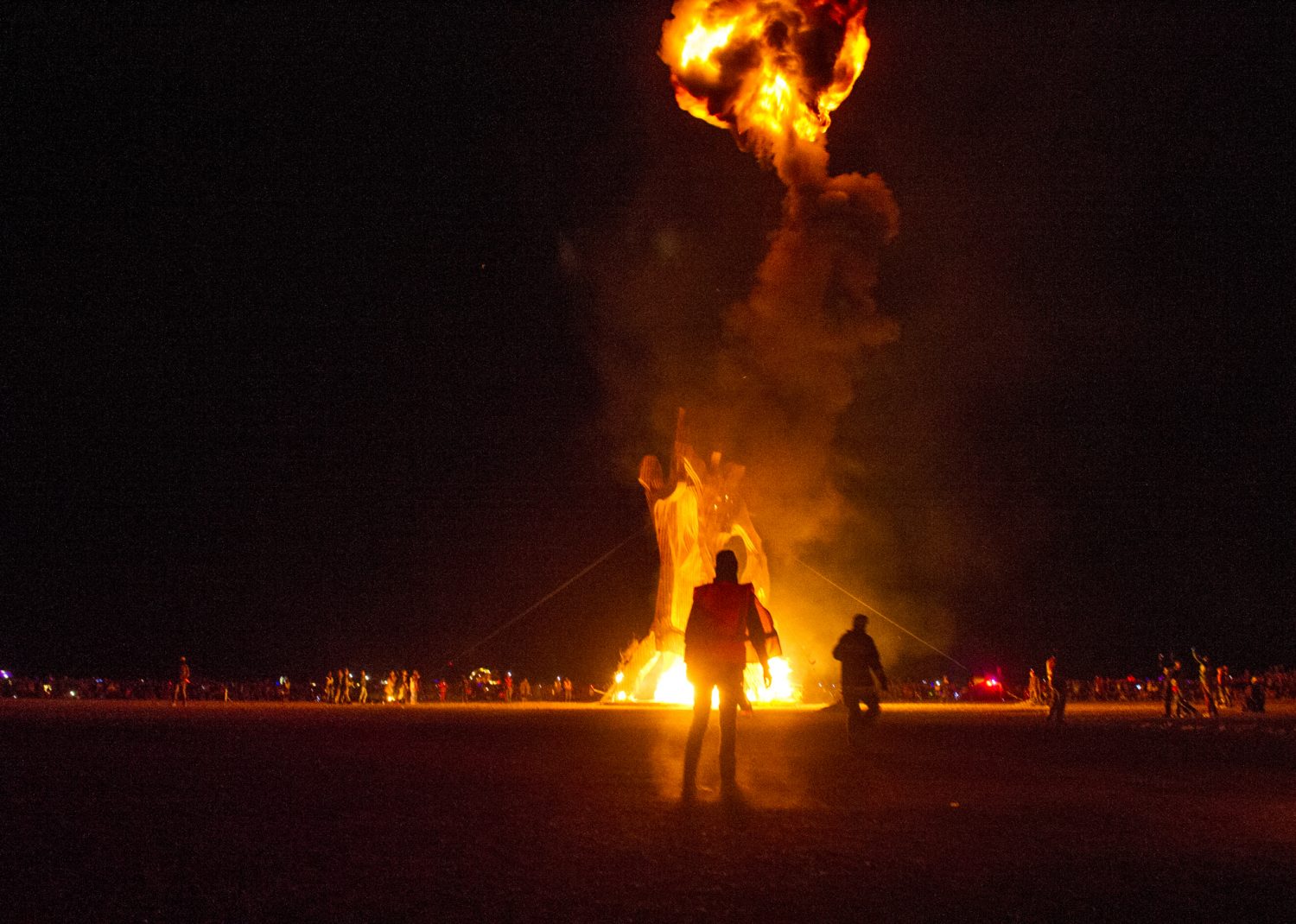
Are you ready for the burn on the playa?
By ‘the burn’ of course we mean the annual weeklong art festival Burning Man that takes place in the Nevada desert! If you have ever seen a video or a reference to Burning Man in the media or in a movie than you probably have a pretty specific picture of what Burning Man is in your mind. People typically envision it as a hedonistic freaky-frenzy of a party with nothing but bizarre art, ravers, hippies, drugs and alcohol. But for most people that attend Burning Man, it isn’t just a massive non-stop party. Burning Man is actually a place to relax, attend a number of events and work-shops, while seeing world-class and uniquely inspired art.
Every year the temporary metropolis of Black Rock City, which is the home of Burning Man, and its community grows. At the same time, so does the clean and sober community within it. Burning Man for many who are clean and sober is often not seen as a fight with temptation, but rather an opportunity to grow.
While there are a few people who may feel this is too risky, and we support and understand your choice, there is also plenty of reason to be confident in going to Burning Man and staying sober. There may be those in your own support system you want to consult with, like a sponsor.
Here is another 8 ways to stay sober at Burning Man.
-
Be honest and careful
This is about being honest with yourself, as well as with others. First, before going to burning man you should be honest with how you feel about the adventure you’re about to go on and your ability to do what you have to in order to remain mindful, happy and sober.
Then be honest with others. For one, the idea that everyone is handing out drugs like candy is probably not always the case. However, for your own safety and peace of mind always ask if anything you may ingest contains drugs or alcohol. Burning Man’s economy is based on gifts, and some may have the best intentions. Let people know you are clean and sober to avoid confusion.
Always consider the source, and use your judgment. Even though most people probably won’t try to slip you anything you don’t want, every year medical tents still report people being dosed without knowing.
-
Go with sober friends
This is always a good idea when going to any shows or music festivals. Having people who are familiar with your own behaviors and your own story can make it a lot easier to lean on them if you start to feel like something is bothering you. If you have sober friends it can be even more effective because they can relate to the things that may bother you. Sober friends can understand and provide a unique kind of peer support, while also keeping you accountable.
-
Enjoy the art and music
Burning Man isn’t just about the huge, all night concerts. There are artists who show up every year who have spent the entire year designing and building unique and awe-inspiring installations of art.
Taking some time to wander around and enjoy some beautiful and exclusive art, which is sometimes even interactive, gives you an opportunity to enjoy stunning visuals without needing drugs or alcohol.
-
Sober Camps
According to one investigation, there are various clean and sober theme camps at Burning Man you can seek out:
- Anonymous Camp
- Run Free Camp
- Camp Stella
- The Hokey Pokey Destiny
You can typically research sober camps ahead of time to find out when and where they will be at Burning Man. You can reach out to the groups to try and plan your own camp site ahead of time, and possibly arrange to meet up with them.
-
Yoga and Meditation
For a lot of people yoga and meditation become a pretty consistent part of their recovery program. It is a relaxing practice that helps with mindfulness and self-awareness. So of course if you are interested in yoga you will be thrilled to know there is frequently a lot of opportunities to take yoga classes during a week at Burning Man.
Vinyasa yoga and kundalini yoga are a few styles that some Burning Man veterans have reported to experiencing during their time in the desert. Some have also spoken of chances to take meditation and breath-work classes and workshops. Stay sober at Burning Man may simply mean staying focused and grounded, and meditation and yoga can do just the trick.
-
Exercise
Just because people come to Burning Man to experience something new and exciting while they escape from the world doesn’t mean they suddenly stop all their good habits. Some people actually enjoy exercising at Burning Man, doing things like riding bikes or organizing group work outs.
According to one young woman’s story, when she went there was even an ultramarathon. Yes… ULTRA-marathon! Burning Man attendees actually got up and ran 50k (31 miles) around the desert.
-
Volunteer
Many people find that volunteering in some way is a huge part of their recovery. Doing service work is one way we can take the focus off of ourselves, build connections with others and do something productive. If you find yourself struggling, you can always find some way to help someone else.
Burning Man can also present a lot of opportunities to do some service and volunteer your time to others. You can offer to help welcome people into the camp grounds and get set up. You can help by cooking meals and finding other ways to give back to those at Burning Man who might need a little help settling in themselves.
-
12 Step Meetings
Believe it or not, there are actually 12 Step meetings every day at Burning Man. While not all people who are clean and sober will be involved in 12 Step groups, the meetings will provide a space to get some support in case you are in need. You can also meet with other sober individuals and get connected with the clean community of Burning Man.
These meetings include Alcoholics Anonymous, Alanon and Narcotics Anonymous. Some of them will alternate between the larger Sober Camps that you can find, but there may also be smaller groups that form more organically.
Conclusion
What you might find surprising, and what several accounts from attendees have found, is that the toughest part about burning man has nothing to do with what some people expect. The true challenge of burning man apparently doesn’t come with avoiding drugs or drinking, but actually from the elements.
Between the desert sun and the dusty climate, staying hydrated and accepting the exhaustion that comes with being amerced in 24 hour music and festivities, some people find that fighting the urge to use is usually the least of their worries. The hard part is keeping the dust off (pretty much impossible) while trying to rest between all the dancing, music, art, and exercise, hanging out and volunteering! There is so much to do at Burning Man that drugs and alcohol might just get in the way. But the truth is, once you build sobriety and recovery on a solid foundation, you have the potential to find true freedom and happiness without needing substances to make it happen.
Building that foundation starts with making a decision to get better. If you or someone you love is struggling with substance abuse or addiction, please call toll-free now.
CALL NOW 1-888-922-5398
by Justin Mckibben | Jul 14, 2017 | Addiction, Alcoholism, Celebrity, Charles Dickens, Ernest Hemingway, Jackson Pollock, Jean-Michel Basquiat, Mental Health, Philip K. Dick, Vincent van Gogh

It is news to no one that connections are often made between many of the most famously creative figures in history and drug or alcohol abuse. Creative types have a reputation for being complex and conflicted individuals, and those characteristics also tend to be associated with alcohol and drug abuse. Not to say that creative types must be alcoholics or addicts, but to at least acknowledge how many addicts or alcoholics are incredibly talented people who still find ways of self-expression even through their struggles.
While we hear so many stories of modern celebrities who have either overcome their battles with substance use, or lost their lives to drugs and alcohol, some of the most influential artists in history also faced down similar issues. Whether it is music, art or literature, some of the most amazing works of cultural depth and significance came from people in the grips of addiction or alcoholism.
Here we take a look at 6 famous artists with addictions throughout history. NOTE: Not all the artists are of the visual variety.
-
Charles Dickens
Charles Dickens is probably most well-known for his part in changing the world of storytelling with the famous holiday fiction “A Christmas Carol” and the epic “A Tale of Two Cities”.
What is probably not nearly as well-know was the fact that Charles Dickens was also an opium user. After each day of writing it is said Dickens would settle down to smoke poppy latex from a hookah. He eventually died at the age of 58 from a stroke on June 9, 1870, which many have partially attributed to his opium use.
-
Jackson Pollock
The idea of Jackson Pollock having a little chaos in his life is probably not that strange to anyone who has seen his paintings. Pollock is revered for his messy “drip painting” technique, with the canvas of his work often splattered and streaked with a frenzy of color. In the 1940s Pollock gained instant fame. So when looking into the chaos of his life as an alcoholic, it is easy to see the metaphor.
Pollock’s alcoholism is said to have been exacerbated by the pressure of his success, and in 1956 he died in a drunk-driving accident that also killed one of his passengers.
-
Ernest Hemingway
Ernest Hemingway is probably one of the most notorious alcoholic artists in literature. As a Nobel Prize winner in 1954, Hemingway has been described as a “economical and understated” voice of that “changed the nature of American writing”; one of the greatest writers of the early to mid-twentieth century. He authored such historical works as:
- “A Farewell to Arms” (1929)
- “For Whom the Bell Tolls” (1940)
- “The Old Man and the Sea” (1852)
However, he is also well known for the intimate relationship he had with alcohol. In one tragic peek into how Hemingway reached to the bottle to cope with the world is a quote stating:
“Modern life, too, is often a mechanical oppression and liquor is the only mechanical relief.”
It is believed that his heavy drinking intensified a medical condition, which led to mental confusion and depression. Hemingway eventually took his life in 1961.
-
Philip K. Dick
You may have heard of the cult classic science fiction film Blade Runner, and if so you should get to know the source material, “Do Androids Dream of Electric Sheep?”
This deeply philosophical novel was written by American author Philip K. Dick. Other well-known sci-fi films were also inspired by his work, including:
- Total Recall
- Minority Report
This writer commonly utilized his art as a window into struggles with mental health or substance abuse. In fact, the author wrote dozens of novels about his own experiences of paranoia, schizophrenia, and drug abuse. He was known for taking drugs, particularly amphetamines. Eventually Philip K. Dick suffered a stroke at the age of 53, which cost him his life. Some have attributed this tragedy to the devastating impact of drugs on his body.
-
Jean-Michel Basquiat
Jean-Michel Basquiat is a famous street artist from Brooklyn who went from homeless and unemployed to selling paintings for 5 figures in just 2 years. Suddenly a single work of art by Basquiat was imposing a price-tage of $50,000. This was a height completely unheard of for any artist.
Needless to say, the sudden surge of fame was a shock to the young man’s system. Especially considering he was a self-admitted heroin addict. At one point the young man claimed he was using up to 100 bags of heroin a day.
Tragically, this astonishingly successful artist was found dead in his East Village apartment from a heroin overdose in 1988.
Basquiat was only 27 years old.
-
Vincent van Gogh
This may be the most ‘house-hold name’ on this list; Vincent van Gogh. Just the mention of his names stirs the feeling of fine art, while his impressionist style was a bold and dramatic footing from which the concept of modern art flourished.
In what can be seen as brilliant and breathtaking, his landscapes and soft self-portraits may not seem like the yearnings of a tortured soul. Staring into his most pivotal pieces, such as the instantly recognizable “The Starry Night” one may see bright optimism in the swirling clouds or burning stars. However, Van Gogh grappled with a deep depression and enervating alcoholism.
Van Gogh spoke of his drinking at one point stating alcohol had, “undoubtedly been one of the great causes of my madness.” His drinking grew worse as he indulged deeply in absinthe, and at the young age of 37 years old, Vincent van Gogh took his own life.
Whether you would say an artist is more likely to be an addict or alcoholic is debatable. However, even in the grips of a disease that diminishes the mind, body and spirit there have been those who have used their art to reach out and express their hopes, or their fears in a way that touches so many others. But some of the most talents and inspiring people have been taken from us far too soon by their addictions. If you or someone you love is struggling, please call toll-free now.
CALL NOW 1-888-922-5398
by Justin Mckibben | Jun 28, 2017 | Addiction Treatment, Alcohol Addiction, Inpatient Treatment, Internet, Social Media, Stigma
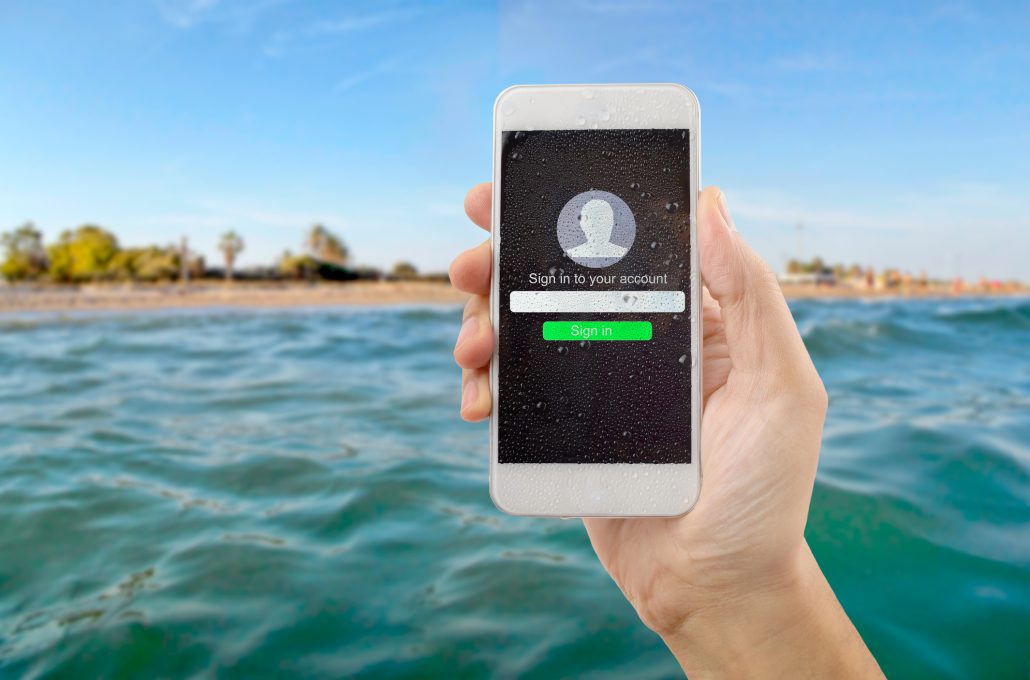
When news travels at the speed of social media there isn’t much of a waiting period for responses to issues that strike a nerve with people. As we were writing and publishing our first response to the story aired by the NBC News Investigation host Megyn Kelly, along with other media outlets such as The New York Times, a fire was catching that lit the internet up.
While we already wrote a response to the Megyn Kelly piece, we wanted to also highlight the amazing response from the recovery community!
The Megyn Kelly story was focused on exposing the fraud and corruption that has infiltrated the addiction treatment industry in South Florida, utilizing interviews with local law enforcement, first responders, politicians and victims of patient brokering and illegitimate sober homes. While it may have been an eye-opener to some in other states, this wasn’t news to the population of South Florida. These tragedies and indiscretions have been talked about for years now. The topic is still causing contention and debate within the community.
However, when the piece aired just this past weekend, many of South Florida’s recovery community set aside much of the debate to answer what was being said.
South Florida Recovery on Social Media
Facebook turned into a major platform yesterday as new hashtags went viral, including:
- #Igotcleaninsouthflorida
- #tellthewholestory
- #southfloridarecovery
- #wedorecover
A huge number of these posts were attached to personal stories of suffering, recovery and astounding accomplishments. Others were attached to photos. Many posts demanding that the media acknowledge the voice of the actual people in the South Florida recovery community. Most of the posts included people sharing their sobriety dates (meaning the day they finally stop drinking or using drugs).
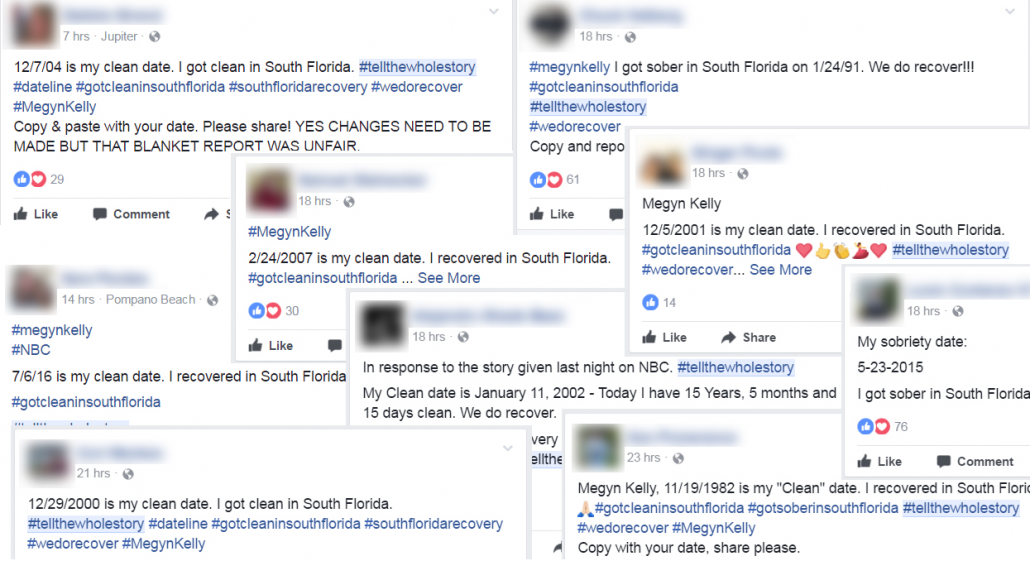
Photo: Facebook posts responding to Megyn Kelly
There is a clear message here- the South Florida recovery community is strong and willing to take a stand.
This profound and inspiring response has been completely organic. One after another people from many areas, especially Delray Beach, started sharing their experience with treatment and recovery in South Florida. Megyn Kelly was tagged in these posts, so surely her social media team got pretty busy sifting through all those notifications.
Some were from people with several months clean and sober, other posts were people with a couple decades of recovery time. There were those who came to Megyn Kelly’s defense, while others took the whole thing as an opportunity to attack her… or the people responding to the story. Still, the presence of South Florida’s own population of people overcoming addiction was making a lot of waves.
The Megyn Kelly Conversation
One thing we should acknowledge about the piece on Megyn Kelly’s show… is it worked.
Granted the camera and narration do not paint the most flattering picture, but it revitalizes an important conversation- safeguarding the addiction treatment industry in South Florida. It worked because we can at least take something from it; the South Florida treatment industry needs to work together with community leaders, officials and people in recovery in the area to help make things better.
However, people in the recovery community did take offense to statements made by people during interviews that implied people were not coming to South Florida and getting better. It might not feel fair to a lot of people who thrive in South Florida’s recovery community that they felt marginalized or misrepresented. Some of the comments suggest that people sent to Florida are more likely to end up dead than they are to end up better, but there seems to be a lot of people with something to say about that.
After hearing the Megyn Kelly story the recovery community in South Florida chose to take the opportunity to stand up for one another. Overnight there was an up-welling of support for those who have come to South Florida, made a life for themselves after treatment and become active members of the community.
It’s About the People
More importantly, this is all about the people who have recovered and the people who are most desperate for it. We want people to know that there are unethical and illicit businesses in every state that exploit this same system, but there are world-class addiction treatment programs in South Florida that take great pride in being part of the solution, not the problem.
This is about the people who have changed their lives, acknowledging their strength, hope and adversities. It is about the people who want to believe that there is a safe place with people who care about improving themselves and each other. We have to let people know what to look for, how to ask the right questions and how to make educated decisions on how to best treat them or their loved ones.
For a more detailed look into the difference between addiction treatment programs and sober living facilities, download our FREE e-book:
5 Critical Mistakes When Picking a Treatment Center and How to Avoid Them
DOWNLOAD FREE E-BOOK
We are proud of how the recovery community of South Florida has responded to the Megyn Kelly story. Part of fixing the issues facing people with addiction is to strip away the stigma of substance use disorder, and a keystone to fixing the stigma is education and awareness. South Florida stood up and told the world #wedorecover because they know if we #tellthewholestory then the entire nation may see that addiction treatment is about healing and helping people together.
South Florida recovery set social media on fire a few nights ago… because South Florida recovery is full of absolutely amazing people too! Imagine if we did that all the time! Imagine if we took it upon ourselves to make this happen every chance we got! Who might get the help they need because of what we share?
My name is Justin Mckibben
My sobriety date is November 28th, 2013
#igotsoberinsouthflorida
Every recovery community has its faults, but the recovery community of South Florida is an amazing place to start your journey to change that could save your life. If you or someone you love is struggling, please call toll-free now.
CALL NOW 1-888-922-5398
by Justin Mckibben | Jun 23, 2017 | Alcohol, Alcohol Addiction, Alcoholism, Binge Drinking, Detox, Fitness, Sports
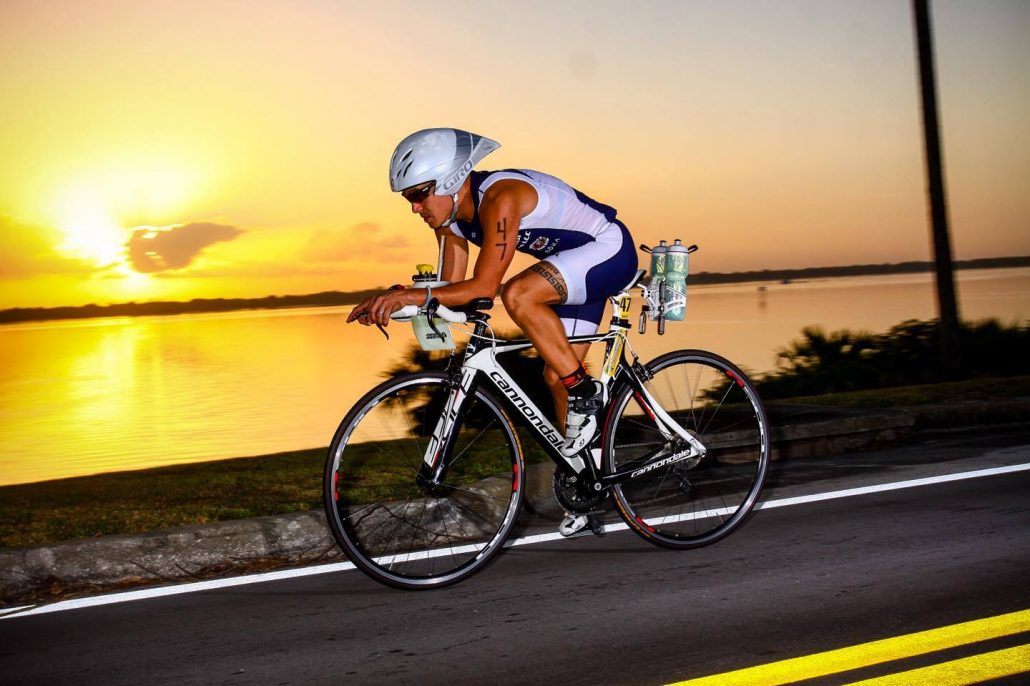
Recently Jeff Salinas, an Alumni from our Palm Partners facility contacted our Alumni department with some exciting news; on the road to recovery he hit the ground running, and soon will be competing in a triathlon, but it isn’t his first since he took off from the starting line he got while in treatment. Jeff shared with us an article written about his awesome new ambition on Florida Today, in which he was quoted saying
“Triathlon saved my life,”
Coming up Sunday, July 25th is the fifth annual Indialantic Boardwalk Triathlon. This is Jeff’s next giant leap on the road of transformation and recovery. The report shares that Jeff has become a regular to the local triathlons, as much as possible, while also competing in local foot races. According to Jeff, all this athletic action is more than just a sport; it has made a lasting imprint on his life, especially in recovery from alcoholism.
At 43 years old, this powerful example of passionate self-improvement has always been an athlete, even before turning his life around. However, when he spoke with journalists about his new competitive edge, he shared how the decision to clean up his act gave him a breathtaking second wind.
“In 2013, 2014 and 2015, I struggled really badly with alcoholism,”
“I finally battled those demons in 2015 … And then I trained for an Ironman triathlon. I made some life-changing moves, and to maintain them, I committed myself to the Ironman Florida Triathlon in Panama City.”
Jeff has been running a long time. Before, you may have said he was running from something. Today, however, it looks more like he’s running toward a better, brighter future.
Functioning Athlete/Alcoholic
Jeff has finished 7 marathons, and in 2013 he decided to try on a triathlon. Of course by his timeline, he was still actively drinking. Apparently he was able to put off drinking during triathlons and compete well enough.
It would appear that looking at the face value, one might categorize Jeff as a “functioning alcoholic”. He was working after moving with the company from San Diego. Jeff was providing for his wife Alpha and daughter Athena, not to mention caring for four dogs and staying active. Yet despite all the running, his drinking was catching up to him and gaining fast. When the question came in regards to if his drinking impacted his family, Jeff states in the interview:
“Bigtime. They’re the ones who got me into recovery. The most important thing is that you have to want it. You don’t go to make someone happy or because it is a good idea … You’ve got to do it for yourself; you have to make those life-changing decisions yourself. I had to ask myself, ‘Am I an addict or an athlete?’ ”
Jeff was put on a new track, with a new gym and new trainers who were ready to run a different kind of race with him; a race toward transformation.
Holistic Healing
Jeff Salinas found his way to Palm Partners, a Palm Healthcare facility that specializes in the treatment of people struggling with substance use disorder and dual diagnosis. In treatment Jeff found himself among recovering individuals of every economic and social background. While in treatment at Palm Partners Jeff experienced some of the most effective and innovative holistic methods, including personal trainers, exercise, good nutrition and yoga classes. Palm Partners and all Palm Healthcare facilities are designed to address every element of physical, emotional and mental recovery to help create lasting change. When asking Jeff about his experience with Palm Partners, and he wrote:
I remember during one of the classes in Palm Partners, we were to think of some kind of short term goal to have us look forward to in order to maintain our sobriety post Palm Partners. I always did want to participate in an Ironman Race Triathlon, which is a 2.4 mile swim, 112 mile bike ride followed by a 26.2 mile run. I thought, I can do this..
While in Palm Partners, this seed was planted. After coming home and maintaining my sobriety , the “Pink Cloud” eventually wore off, and I was starting to get depressed again and lose my momentum in my drive of wanting to stay sober. Then I remembered about the Ironman that I always wanted to do. So I did what I could to sign up for that race which was a year prior to the event. And from there, what’s in the FL Today article did follow suit.
I honestly do value the teachings and classes in PP. And it’s all relative, it doesn’t have to be triathlon or running, but it’s that internal driving force we had since our youth of purity, but somewhere along the timeline of growing up we lost it through addiction. Palm Partners helped me rekindle that fire inside me that almost went out. And, I’m forever greatful…
Becoming an Ironman
After finding himself back in the present, Jeff said:
“In Delray, I took everything in and really determined that I wanted to change… And so I committed to triathlon.”
Jeff credits the structure and strict training the sport demands to much of his attraction to it. The training requires a great deal of focus and dedication to practicing the three specific forms, leaving not much energy for the thought of drinking. In his interview with Florida Today, Jeff states:
“I committed to a seven-month training plan for the Ironman and fitted it around work and my personal schedule,”
“I tried to do (recovery) meetings, but that wasn’t what I needed. Instead, I’d show up for training and then go home and feel spent. It has been showing up for training that has helped me change.”
Last November in Panama Beach Jeff reached a milestone in his journey to a more fulfilled life. Jeff went on to say,
“I knew my mission was over once I crossed that line, when the commentator announced, ‘Jeff Salinas, you are an Ironman!’ ”
Alpha and Athena supported Jeff through every step of this race; from the decision to enter treatment and then to crossing the Ironman finish line.
Staying on the Path
Jeff has run in:
- Pineapple Man Triathlon
- Boardwalk Triathlon
Jeff has also qualified for and finished the Florida Triathlon, and is a member of the Donner Wealth Management Triathlon Team.
So what is next for the Palm Partners Alumni?
According to the report his new goal to finish the big race this Sunday in an hour, 10 minutes (give or take) to break his own record. After that- qualify for the Boston Marathon which he would like to do in November’s Space Coast Marathon.
One thing Jeff says during the interview that speaks volumes to his commitment to change is when talking about the race after-parties. Most of the events have food after, and beer is a common addition. Apparently the race community has plenty of it to go around. But in Jeff’s words,
“Well good for them. But not for me. Not for me.”
Jeff Salinas will be putting his passion to the pavement at the Indialantic Boardwalk Triathlon this Sunday, June 25th at 7 AM. The event takes place in Nance Park, 100 Miramar Ave., Indialantic. The event is for the benefit of Candlelighters of Brevard in Indian Harbour Beach.
We are happy to cheer for our Palm Partners Alumni, especially when they are sharing how passion, dedication and transformation make such amazing things possible. Jeff Salinas is a moving example of how willingness and action can change your life. On the road to recovery, Jeff is truly a trailblazer. If you or someone you love is struggling with substance abuse or addiction, please call toll-free now.
CALL NOW 1-888-922-5398








